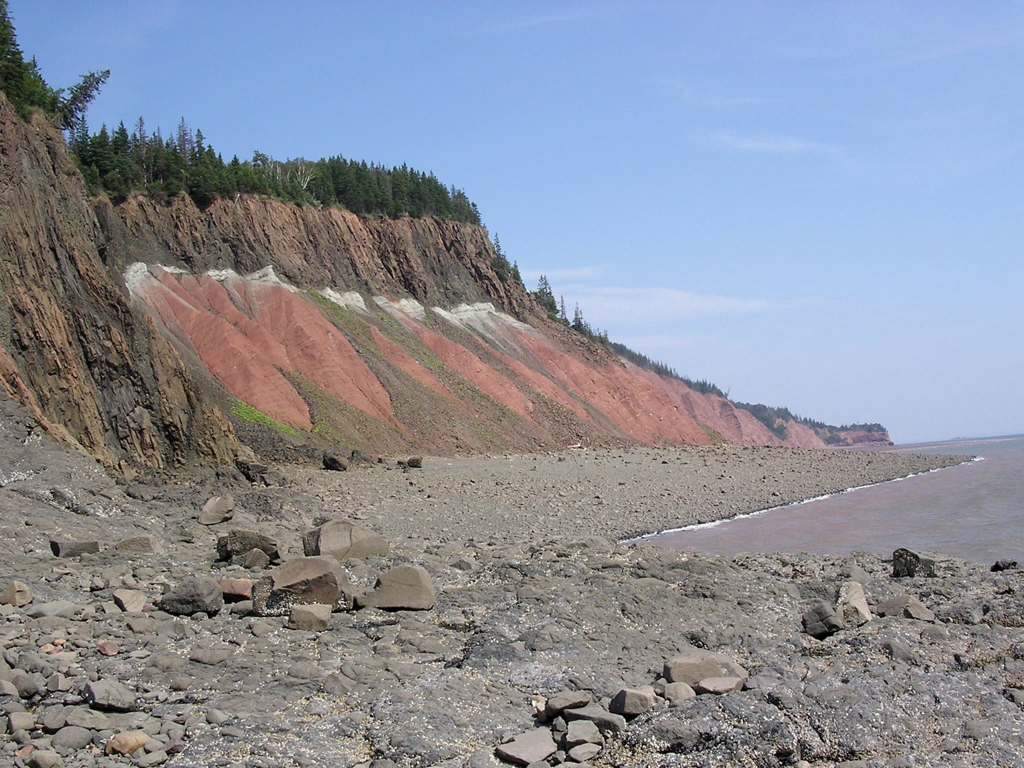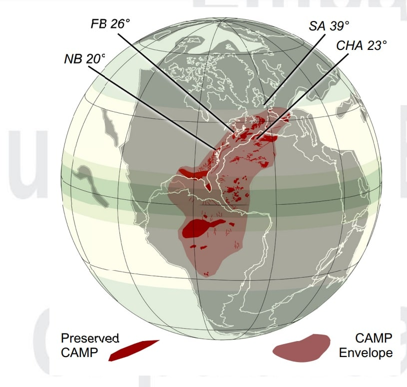Volcanic winters triggered mass extinctions, paving the way for the rise and flourishing of dinosaurs.
Geologists associate most mass extinctions on Earth with monumental magmatic eruptions, during which a significant amount of greenhouse gases and aerosols are released into the atmosphere. This intensifies the greenhouse effect, alters the climate, and triggers a restructuring of ecosystems. All species that fail to adapt eventually disappear.
Such constructs do not always align with observations. For instance, evidence of the mass extinction at the end of the Triassic period chronologically coincides with the onset of active volcanism. Geologists have identified this in the stratifications of the Newark Basin in North America, which formed in a massive rift zone in the Earth's crust, marking the beginning of Pangaea's breakup. This rock complex is referred to as the Central Atlantic Magmatic Province.
To clarify the sequence of events, scientists from Morocco and China, led by Denis Kent from Rutgers and Columbia Universities (USA), utilized data regarding the Earth's magnetic field inversion during "chron E23r," which occurred just before the terrestrial mass extinction.

The layer with reversed polarity "chron E23r" was discovered in the Tizourgane section of the High Atlas Mountains in Morocco. A similar layer was found among the sedimentary rocks of the Bigoudine formation, at the base of the oldest lavas in the Central Atlantic Magmatic Province. It was also tracked in the Blomidon formation in the Northern Appalachians of Canada.
This data helped synchronize layers across different continents and reconstruct the sequence of events that led to the mass extinction.
According to a new article, published in the journal PNAS, the initial phase of Pangaea's breakup lasted approximately 46,000 years. However, the majority of basalt was erupted in four, at most five pulses, lasting no more than a century.
Each pulse was accompanied by a brief but severe volcanic winter.

The authors of the study believe that the release of large volumes of sulfate aerosols into the atmosphere drastically cooled the planet. Not all terrestrial species survived multiple volcanic winters, making way for more adapted species. It is possible that during the cold periods, feathered dinosaurs residing in polar regions gained advantages, while large pseudosuchians that had dominated the tropics went extinct.
The subsequent global warming, which developed more slowly, finished the job. One of its consequences was the mass mortality of marine species due to ocean acidification and anoxia.